Deformation characteristics and reactivation mechanism of Hongyanzi landslide in Pubugou reservoir area of the Dadu River
-
摘要: 库水涨落常诱发库岸滑坡变形破坏。为了研究库岸滑坡的变形特征及变形机理,以大渡河瀑布沟水电站红岩子滑坡为对象,通过详细的地表宏观变形调查和对监测数据的深入分析,结合GeoStudio数值模拟,深入研究了该滑坡的变形特征、渗流场、稳定性及库水对滑坡的作用机理。结果表明:红岩子滑坡地表宏观变形显著,累计位移曲线呈“阶跃”式特征,库水下降是滑坡变形的主要诱发因素;库水位由850 m高水位集中下降至830 m以下时,位移阶跃启动,“阶跃”段的累计变形量占全年总变形量的90%以上,当库水位下降速率大于0.5 m/d时,滑坡加速变形;滑坡变形模式为蠕滑-拉裂,库水升降导致滑体内部渗透力的变化,对滑坡稳定性影响很大,引发滑坡“阶跃”变形。Abstract: Reservoir water fluctuation can often trigger deformation and failure of reservoir bank landslides. This study focuses on the Hongyanzi landslide in the Pubugou hydropower Station of the Dadu River to investigate the deformation characteristics and deformation mechanisms of the reservoir bank landslides. Through detailed surface macro deformation surveys, monitoring data analysis, and GeoStudio numerical simulation, the deformation characteristics, seepage field, stability and the influence of reservoir water on landslide were studied in depth. The research revealed significant macro deformation of the Hongyanzi landslide surface, with a cumulative displacement curve exhibiting a “step-like” characteristic. The primary inducing factor of landslide deformation was found to be the decrease in the reservoir water level. When the reservoir water level dropped from 850 m to below 830 m, the displacement step was triggered, and the cumulative deformation of the “step” segment accounted for over 90% of the total annual deformation. Accelerated deformation of the landslide occurred when the rate of the reservoir water level decline was greater than 0.5 m/d. The landslide deformation mode was identified as creep slip-tensile cracking, with the rise and fall of the reservoir water level significantly impacting the internal permeability of the sliding body and causing a large impact on the landslide’s stability, leading to the “step-like” deformation of the landslide.
-
0. 引言
柱状岩体崩塌在我国西南地区频繁发生,如2004年8月12日重庆甑子岩崩塌、2013年2月18日贵州凯里市老山新村崩塌等,其具有分布范围广、破坏能力强、影响范围大等特点。在岩体崩塌过程中,危岩体不断破碎解体,形成由不同粒径岩块构成的碎屑物质集合体,即崩塌碎屑流,其致灾范围常超过数百米。因此,对此类崩塌动力特征与破碎规律的研究十分重要。
当前国内外学者对塔柱状岩体崩塌的动力特征与破碎规律研究较少,更多的是将塔柱状岩体简化为柱体崩塌研究其运动与堆积规律。Crosta等[1]基于PFC2D研究了不同高宽比及连接准则的柱体崩塌,结合试验资料验证了离散元模拟柱体崩塌动力过程的可行性。Utili等[2]基于离散元研究了不同高宽比和摩擦条件下颗粒柱体表面随时间的演变过程,验证了离散元模拟柱体崩塌运动过程的有效性。Zhou等[3]基于离散元研究了颗粒柱的不同几何尺寸与颗粒摩擦系数的对混合粒径干颗粒流运动及堆积特征的影响。Huang等[4]将大型柱状岩体的崩塌概化为颗粒柱的崩塌,通过室内试验研究了柱体中不同粒径组分的运动特征。在实际崩塌中,节理、裂隙的存在对岩体的崩塌有着至关重要的作用,而地形又对堆积区的形态、颗粒破碎程度有较大影响,因此对真实崩塌的数值模拟研究尤为重要。
一些学者对甑子岩的演化机制、力学性能与失稳模式进行研究。陈智强与李渝生[5]对甑子岩的形成演化机制与防治措施进行了研究。贺凯等[6-8]基于现场调查、室内试验及数值计算等手段对甑子岩W12危岩体崩塌进行了详细研究,提出了塔柱状岩体压裂溃屈崩塌破坏模式,并从损伤力学角度揭示了塔柱状底部岩体的强度劣化机制。冯振等[9]基于UDEC对甑子岩初始变形破坏进行了研究,发现甑子岩崩塌的触发条件为岩体软弱基座的破坏。孙敬辉等[10]基于Rockfall软件对甑子岩不同尺寸崩塌落石的运动轨迹、速率、等进行研究,将崩塌落石区进行了风险评估与危险性分区。但当前尚未有学者对甑子岩崩塌破碎全过程进行模拟研究。
基于MatDEM离散元软件对甑子岩W12危岩体崩塌动力特征与破碎规律进行了研究,依据实际节理分布建立了崩塌模型,实现了对崩塌运动全过程的模拟,通过与现场影像对比验证了模型的有效性,在此基础上,通过对MatDEM二次开发,统计分析了运动过程中岩块粒径分布演化规律,并引入分形维数与双参数Weibull分布模型对颗粒破碎程度进行了研究。
1. 崩塌特征与地质气候条件
1.1 甑子岩崩塌特征
重庆市金佛山景区甑子岩危岩带的W12危岩体于2004年8月12日12时53分发生了大规模山体崩塌 (文中简称甑子岩崩塌)。甑子岩崩塌体崩塌体高度为250 m,宽度为50 m,体积约为50×104 m3,运动距离距崖脚约600 m,崩塌前后最大高差超过500 m (图1、图2)。崩塌体结构破碎,节理裂隙十分发育,在坠落撞击基底层时与空气相互作用剧烈,形成显著的超前空气冲击效应,激起浮尘高度近150 m。由于及时预警,此次崩塌未造成人员伤亡[11]。
1.2 地质气候条件
甑子岩崩塌源区岩体所在斜坡结构为上部坚硬,中下部软弱的“上硬下软”型岩体结构(图3)。危岩带由两级陡崖组成,一级陡崖由栖霞组和茅口组一段石灰岩组成;二级陡崖由茅口组三、四、五段石灰岩组成;危岩带中均有岩溶发育,二级陡崖多发育有溶洞,一级陡崖底部石灰岩与炭质页岩接触面上则以岩溶大泉为主要特征,局部仍见有溶洞。
由图3可知,崩塌体位于甑子岩二级陡崖,呈三棱柱状。其高约250 m,宽约50 m。崩塌源区岩层产状为280°~300°∠4°~5°,呈缓内倾岩体结构,崩塌体主要受三组裂隙切割控制(图4),① 310°∠89°(J1),延伸长约200 m,贯通至顶,张开宽度2 m左右,充填碎块石土,下部张开20~30 cm,无充填,裂面见钙泥质物,构成危岩体北侧边界;② 25°∠89°(J2),延伸长度200 m,张开约10 cm,无充填,局部充填碎石,裂面见钙质物,贯通至顶,构成南侧边界;③ 组裂隙(J3)为层间裂隙在危岩体中部、下部形成凹岩腔,高0.50 m。J1、J2两组节理将山体分割成三棱柱形危岩体,危岩体西南面临空,加之危岩体底部基座为软弱页岩,导致岩体底部在上覆岩体的自重作用下,容易发生压缩流变及剪切流变。
金佛山地区属亚热带温湿气候,具有“气候温和、雨量充沛、绵雨久、湿度大”等特征。危岩体崩塌发生于该地区雨季(5—9月),在节理裂隙、溶蚀管道等通道的优势入渗作用下,降水会显著降低硬岩底部软弱层强度,岩溶作用进一步加大了这种趋势,引起差异沉降或局部崩塌,反过来又导致岩体节理裂隙扩大,形成恶性循环,最终使岩体稳定性降低,发生崩塌。
2. 离散元数值模拟
2.1 MatDEM模型建立
甑子岩崩塌MatDEM模型如图5所示。模型宽1200 m,高800 m,其中源区宽38~42 m,高约250 m,高宽比a为5.95~6.58。模型主要由崩塌源区与刚性基底层组成,崩塌源区由活动颗粒胶结而成,可遵循牛顿第二定律计算产生速率及位移,刚性基底层由边界刚性单元组成,仅参与受力计算,并不产生速率与位移。
根据岩体中存在着的三组节理面将模型源区分为三部分,源区下部高度为100 m的区域由强度较低的胶结单元组成,源区上部高度为150 m的区域由强度较高的胶结单元组成。因J1与J2两组节理在二维平面模型中表现一致,因此节理仅分为两组。横向节理J3与水平方向夹角为0°~5°,间距约20 m;竖向节理在横向上位于源区中部,竖直延伸,上下各留约50 m。
模型以破坏源区下部20%高度内的单元连接作为模型的触发条件,模拟基底压碎的情况。
2.2 MatDEM模型参数确定
贺凯等[6-8]曾对甑子岩地区采集的岩样开展了岩体物理力学性质试验。甑子岩崩塌源区中上部主要为二叠系下统茅口组四、五段,因二者强度相近,故采用相同强度参数。源区下部主要为二叠系下统茅口组三段,受岩溶发育、人类工程活动及气候因素影响,岩体强度较低。因源区岩体在失稳前已经历严重的风化或扰动,其强度较完整岩体有较大折减,所以文章所采用的材料参数在贺凯所得试验结果上有所折减。
离散元法通过堆积具有特定力学参数的颗粒以更好地实现对自然岩土体散粒特性的模拟。其整体力学性质与其单元间的接触关系、力学参数和堆积方式等有关[12]。因此采用MatDEM内置的材料参数标定程序BoxMatTraining进行离散元宏微观参数转换,其原理为对基于随机堆积而成的试样做模拟三轴试验,并根据试验结果不断调整输入参数,直至试验结果与真实情况基本一致,以完成材料参数的训练。材料力学参数如表1所示。
表 1 模型材料力学参数Table 1. Mechanical parameters of the Zengziyan rockfall model材料属性 符号与单位 源区上部岩体 源区下部岩体 节理 密度 ρ/(kg·m−3) 2700 2700 2600 弹性模量 E/GPa 65 58 8 泊松比 v 0.20 0.17 0.14 抗拉强度 Cu/MPa 5.3 1.4 0.9 抗压强度 Tu/MPa 51 13 3 内摩擦系数 μi 0.87 0.7 0.7 单元直径 di/m 0.4±0.08 0.4±0.08 0.4±0.08 2.3 MatDEM二次开发
基于MatDEM计算数据进行二次开发以研究岩体破碎过程,文章参考了奚悦[13]的研究作为岩块的确定准则。在岩块的运动过程中,由于碰撞等因素,部分颗粒单元间的胶结会遭到破坏,另一部分颗粒单元间仍保持胶结状态。文章认为存在连接的两个单元属于同一个岩块。考虑天然岩体中节理、裂隙分布的多样性,由颗粒胶结组成的条状结构、多个颗粒胶结形成闭环与在闭环上向外延伸单元均被判定为岩块。
许多学者使用等效粒径的概念研究岩体破碎的粒径分布,经过对比试算,选用等效粒径计算公式如下:
(1) 式中:
二次开发原理:在MatDEM每一计算时间步中均记录有单元接触矩阵d.mo.nBall与单元连接分布矩阵d.mo.bFilter,单元接触包括压缩、拉伸、剪切三种接触模式,压缩接触的单元间并不一定存在连接,因此单元接触矩阵并不能表示与一个单元胶结的所有单元,将两矩阵结合起来可获得与一个单元接触胶结的所有单元,将单元连接矩阵中所有具有相同元素的行归纳在一起,去除重复元素并与单元接触矩阵相对照,即可得到岩块分布矩阵。
2.4 分维特征与Weibull分布模型
岩体崩塌过程中岩块将不断发生摩擦、撞击,导致颗粒破碎,因此引入分形几何理论中的分形维数D描述岩块破碎后的粒度属性,当粒径分布越分散,岩块粒径越小,则D值越大。采用Gates-Gaudin-Schuhmann (GGS)分布计算分形维数[14]。
(2) 式中:M
对式(2)等式两边取自然对数,则可变为式(3):
(3) 式中:n——因变量
Turcotte[15]推导出在GGS分布中分形维数D与式(3)中的n关系如下:
(4) 引入双参数Weibull分布模型对崩塌前后岩块的粒径分布进行描述,公式为:
(5) 式中:
β——形状参数,可用于衡量粒径分布的广度,β值越大,粒径分布越窄。
3. 模拟结果分析
3.1 崩塌速率演化与有效性验证
甑子岩崩塌过程速率演化如图6所示。整个崩塌过程持续26.8 s。当运动开始t=1.6 s时,崩塌岩体顶部有明显位移差产生,岩体中下部有水平位移趋势,受地形作用,岩体底部形成低速三角区域,其单元速率基本为0,岩体其他部位单元速率基本相同,为15 m/s。当t=3.2 s时,岩体顶部位移差继续增大,最大位移达50 m,受单元速率与地形影响,中下部崩塌岩体水平位移明显,部分单元已滑出一级陡崖,崩塌岩体平均速率增加至20 m/s。t=4.8 s时,上部岩体有明显沿节理裂隙面破裂迹象,破裂后的两部分运动速率有明显差异,其平均速率分别为26.8 m/s与29.2 m/s,崩塌体底部已开始凌空飞行,最大速率为35 m/s,在低速三角区域与下落运动部分间有明显速率过渡区出现。
t=6.4 s时,崩塌岩体已沿节理裂隙面明显分离,凌空飞行速率已超过40 m/s,崩塌体前缘少量颗粒已开始撞击底面刚性模型。t=8.0 s时,斜坡地面已形成堆积,凌空飞行的岩体沿内部横向节理面有解体迹象,竖向节理右侧岩体坠落速率明显增加,已超过35 m/s。t=9.6 s时,崩塌体处低速三角区域外均以进入凌空飞行状态,竖向节理左侧岩体速率为35.6 m/s。当t=12.8 s时,甑子岩上部岩体已基本结束凌空飞行坠落至斜坡地面,此时破碎岩体仍具有较高的速率,破碎岩体将继续发生摩擦、移动、撞击、破碎解体等过程,直至动能全部消散。t=26.8 s时,崩塌岩体各部分动能基本已消散完成,堆积区已经形成,通过测量可知堆积区长度为450 m,最大堆积厚度为40 m。
通过与甑子岩崩塌影像进行对比,可证实MatDEM崩塌模拟的有效性。图7为甑子岩(W12)崩塌过程影像。当T=6 s时,源区中上部岩体间有碎屑溅射,说明此时按已经发生破碎,与MatDEM模拟中t=6.4 s时情况一致。当T=9.3 s时,崩塌体整体已开始离开一级陡崖进入凌空坠落状态,与MatDEM模拟中t=9.6 s时的岩体运动一致。在T=21.2 s之后,甑子岩崩塌已基本完成,在影像中仅剩崩塌形成的冲击气浪仍在扩散,与模拟中的t=26.8 s时的情况相同。通过对比影像资料与MatDEM模型可证明离散元模拟的有效性,该模型可以反映甑子岩崩塌的动力特征。
3.2 崩塌动力破碎演化
甑子岩崩塌过程中碎屑等效粒径分布演化如图8所示。当t=1.6 s时,崩塌体底部内侧相对较完整的岩体破碎成为基本单元,中上部岩体沿预设节理面破裂明显,完整的岩体被分割为不同等效粒径的岩体,等效粒径范围为8~21 m。t=3.2 s时,崩塌体开始运动至一级陡崖外,中上部岩体自下而上开始破裂解体,等效粒径降低至0~8 m。t=4.8 s时,中上部岩体沿节理裂隙面破裂、坠落,因与低速三角区域摩擦、撞击导致颗粒破碎明显,等效粒径降至4 m左右,凌空飞行的岩体大部分已破碎为基本颗粒。
t=6.4 s时,岩体顶部基本未发生破碎,岩体沿节理面已明显分离,基本颗粒单元包裹大粒径岩体凌空飞行。t=8.0 s时,竖向节理右侧的岩块已滑离一级陡崖,等效粒径维持在8 m左右,凌空飞行的中部岩体等效粒径降至2 m。当t=9.6 s时,除低速三角区域外崩塌源区已滑出一级陡崖,顶部岩体等效粒径仍维持在20 m左右,凌空飞行的岩块与斜坡堆积区产生的碰撞对岩块造成了再次破碎,大部分等效粒径基本已降低至基本颗粒单元,少部分岩块等效粒径为2 m左右。t=12.8 s时,崩塌源区大部分岩体已形成堆积,仍有等效粒径为4 m、8 m的岩块存在,顶部岩体发生破碎粒径降低至0~13.5 m,根据图6,此时颗粒仍具有较大动能,颗粒将在堆积区进一步撞击破碎。t=26.8 s时,崩塌运动结束,堆积区形成,大部分岩体已破碎为基本颗粒单元,但在减速堆积过程中岩体破碎不明显,大粒径岩块基本集中在堆积体表面,呈现反粒序堆积分布特征。
岩体崩塌基本单元增长率与最大平均速率如图9所示,基本单元增长率峰值点与甑子岩崩塌各阶段密切相关,由此可确定甑子岩崩塌过程中存在四个显著的破碎时刻,即基本单元增长率中的4个明显峰值点,其分别是崩塌源区底部岩体受压破碎、中上部岩体撞击低速三角区、中部岩体撞击斜坡地面与上部岩体撞击斜坡地面。因颗粒破碎原因不一致,因此基本单元增长率曲线与最大平均速率曲线变化规律并不完全一致。图中最大平均速率曲线仅有一个峰值,是因为在崩塌过程中岩体首先进入受底部岩体约束的坠落状态,之后滑出一级陡崖进入凌空飞行状态,单元速率持续增加,直至岩体撞击斜坡地面开始减速,因此最大平均速率最值点发生于大部分岩体在凌空飞行时的阶段。
3.3 分维特征与Weibull曲线拟合
甑子岩崩塌前后岩块质量分布如图10所示。崩塌前后拟合直线的斜率分别为0.95与0.88,
岩体崩塌前后等效粒径级配曲线如图11所示,采用了双参数Weilbull分布模型进行曲线拟合,崩塌前后尺度参数
4. 讨论
关于甑子岩崩塌的研究之前多集中于其启动机理与稳定性分析[5-6, 8-9],其运动过程的研究多为基于影像资料分析其运动特征[7],文章实现了对甑子岩危岩体崩塌运动全过程的离散元模拟,模拟的崩塌过程与影像资料相吻合,并引入分形维数与双参数Weibull分布模型对堆积颗粒进行了分析。模拟崩塌过程中危岩体底部低速三角区域的出现及其形态特征与许多学者在室内试验中观测到的基本一致[16-17],崩塌堆积区最终呈现反粒序堆积分布特征[18]。
许多学者将柱状岩体崩塌问题简化为颗粒柱崩塌进行研究,基于室内试验与数值模拟研究柱体高宽比、颗粒间粘结状态对运动过程与堆积分布的影响[2, 16, 19]。但如甑子岩危岩体、重庆箭穿洞危岩体、新疆盖孜河危岩群体等一般位于高处[20-21],其崩塌过程常伴随凌空飞行阶段与落地后撞击斜坡发生二次破碎阶段,破碎颗粒能量与粒径均会发生较大改变,因此,之后可进一步研究颗粒柱高程、斜坡角度及坡面摩擦系数等对柱体崩塌破碎影响。一些学者对实际柱状危岩体崩塌进行了数值模拟研究,但其关注点多在于崩塌运动过程的分析,较少引入颗粒单元破碎、分维特征等内容对崩塌堆积体进行分析,文章补充了这方面的空白,在未来也可通过现场调查甑子岩堆积体分布特征进行进一步优化数值模拟模型[22-23]。
5. 结论
(1) 文中基于MatDEM离散元软件,实现了对按照真实节理分布的甑子岩W12危岩体崩塌全过程模拟,并通过与影像资料对比验证了数值模拟的有效性。
(2) 通过对MatDEM二次开发,统计分析了甑子岩崩塌全过程等效粒径演化与破碎规律,确定了崩塌过程中岩体四个显著的颗粒破碎时刻,分别是崩塌源区底部岩体受压破碎、中上部岩体撞击低速三角区、中部岩体撞击斜坡地面与上部岩体撞击斜坡地面。
(3) 引入了分形维数与双参数Weibull分布模型对甑子岩崩塌前后进行分析,崩塌后分维值D增加至2.12,尺度参数
-
表 1 滑坡变形加速阶段库水下降速率均值
Table 1 Summary table of mean decline rate of reservoir water during landslide deformation acceleration phase
年份 日期 库水下降速率/(m·d−1) 2013 3月1日—3月22日 0.76 3月27日—4月12日 0.72 4月15日—4月17日 0.87 2014 3月2日—3月9日 0.59 4月4日—4月10日 0.67 4月15日—4月25日 0.91 2018 1月23日—2月10日 0.85 3月27日—3月31日 0.56 2019 2月22日—3月2日 0.72 3月22日—4月2日 0.89 4月26日—4月29日 0.70 表 2 滑坡物理力学参数
Table 2 Physical and mechanical parameters of the landslide
岩性 重度
/(kN·m−3)黏聚力
/kPa内摩擦角
/(°)渗透系数
/(m·d−1)堆积层 20 20 15 0.450 基岩 26 3200 44 0.001 表 3 滑坡计算参数
Table 3 Landslide calculation parameters
编号 模拟工况 荷载组合 I 降雨 自重+2013年真实降雨 II 降雨+库水 自重+2013年真实降雨+2013年库水位 -
[1] 朱宇航,黄海峰,殷坤龙,等. 基于滑坡破坏模式分析的易发性评价—以三峡库区首段泄滩河左岸为例[J]. 中国地质灾害与防治学报,2023,34(2):156 − 166. [ZHU Yuhang,HUANG Haifeng,YIN Kunlong,et al. Evaluation of landslide susceptibility based on landslide failure mode analysis: A case study of the left bank of Xietan River in the first section of Three Gorges Reservoir[J]. The Chinese Journal of Geological Hazard and Control,2023,34(2):156 − 166. (in Chinese with English abstract) [ZHU Yuhang, HUANG Haifeng, YIN Kunlong, et al. Evaluation of landslide susceptibility based on landslide failure mode analysis: a case study of the left bank of Xietan River in the first section of Three Gorges Reservoir[J]. The Chinese Journal of Geological Hazard and Control, 2023, 34(2): 156-166.(in Chinese with English abstract)
[2] 殷跃平. 三峡库区地下水渗透压力对滑坡稳定性影响研究[J]. 中国地质灾害与防治学报,2003,14(3):1 − 8. [YIN Yueping. Seepage pressure effect on landslide stability at the Three Gorges Reservoir area[J]. The Chinese Journal of Geological Hazard and Control,2003,14(3):1 − 8. (in Chinese with English abstract) DOI: 10.3969/j.issn.1003-8035.2003.03.001 YIN Yueping. Seepage pressure effect on landslide stability at the Three Gorges Reservoir area[J]. The Chinese Journal of Geological Hazard and Control, 2003, 14(3): 1-8. (in Chinese with English abstract) DOI: 10.3969/j.issn.1003-8035.2003.03.001
[3] 杨金,简文星,杨虎锋,等. 三峡库区黄土坡滑坡浸润线动态变化规律研究[J]. 岩土力学,2012,33(3):853 − 858. [YANG Jin,JIAN Wenxing,YANG Hufeng,et al. Dynamic variation rule of phreatic line in Huangtupo landslide in Three Gorges Reservoir area[J]. Rock and Soil Mechanics,2012,33(3):853 − 858. (in Chinese with English abstract) DOI: 10.3969/j.issn.1000-7598.2012.03.032 YANG Jin, JIAN Wenxing, YANG Hufeng, et al. Dynamic variation rule of phreatic line in Huangtupo landslide in Three Gorges Reservoir area[J]. Rock and Soil Mechanics, 2012, 33(3): 853-858. (in Chinese with English abstract) DOI: 10.3969/j.issn.1000-7598.2012.03.032
[4] MÜLLER LEOPOLD. The rock slide in the Vajont Valley[J]. Rock Mechanics and Engineering Geology, 2(3): 148 − 212.
[5] 王兰生. 意大利瓦依昂水库滑坡考察[J]. 中国地质灾害与防治学报,2007,18(3):145 − 148. [WANG Lansheng. Investigation on landslide of Vaion Reservoir in Italy[J]. The Chinese Journal of Geological Hazard and Control,2007,18(3):145 − 148. (in Chinese with English abstract) DOI: 10.3969/j.issn.1003-8035.2007.03.033 WANG Lansheng. Investigation on landslide of Vaion Reservoir in Italy[J]. The Chinese Journal of Geological Hazard and Control, 2007, 18(3): 145-148. (in Chinese with English abstract) DOI: 10.3969/j.issn.1003-8035.2007.03.033
[6] 冯文凯,顿佳伟,张国强,等. 库水作用下青杠坪滑坡堆积体变形演化趋势[J]. 科学技术与工程,2020,20(27):11003 − 11011. [FENG Wenkai,DUN Jiawei,ZHANG Guoqiang,et al. Deformation evolution trend of Qinggangping landslide accumulation under the action of reservoir water[J]. Science Technology and Engineering,2020,20(27):11003 − 11011. (in Chinese with English abstract) DOI: 10.3969/j.issn.1671-1815.2020.27.004 FENG Wenkai, DUN Jiawei, ZHANG Guoqiang, et al. Deformation evolution trend of qinggangping landslide accumulation under the action of reservoir water[J]. Science Technology and Engineering, 2020, 20(27): 11003-11011. (in Chinese with English abstract) DOI: 10.3969/j.issn.1671-1815.2020.27.004
[7] 郑颖人,时卫民,孔位学. 库水位下降时渗透力及地下水浸润线的计算[J]. 岩石力学与工程学报,2004,23(18):3203 − 3210. [ZHENG Yingren,SHI Weimin,KONG Weixue. Calculation of seepage forces and phreatic surface under drawdown conditions[J]. Chinese Journal of Rock Mechanics and Engineering,2004,23(18):3203 − 3210. (in Chinese with English abstract) DOI: 10.3321/j.issn:1000-6915.2004.18.031 ZHENG Yingren, SHI Weimin, KONG Weixue. Calculation of seepage forces and phreatic surface under drawdown conditions[J]. Chinese Journal of Rock Mechanics and Engineering, 2004, 23(18): 3203-3210. (in Chinese with English abstract) DOI: 10.3321/j.issn:1000-6915.2004.18.031
[8] 时卫民,郑颖人. 库水位下降情况下滑坡的稳定性分析[J]. 水利学报,2004,35(3):76 − 80. [SHI Weimin,ZHENG Yingren. Analysis on stability of landslide during reservoir drawdown[J]. Journal of Hydraulic Engineering,2004,35(3):76 − 80. (in Chinese with English abstract) DOI: 10.3321/j.issn:0559-9350.2004.03.013 SHI Weimin, ZHENG Yingren. Analysis on stability of landslide during reservoir drawdown[J]. Journal of Hydraulic Engineering, 2004, 35(3): 76-80. (in Chinese with English abstract) DOI: 10.3321/j.issn:0559-9350.2004.03.013
[9] ZANGERL C,EBERHARDT E,PERZLMAIER S. Kinematic behaviour and velocity characteristics of a complex deep-seated crystalline rockslide system in relation to its interaction with a dam reservoir[J]. Engineering Geology,2010,112(1/2/3/4):53 − 67.
[10] PARONUZZI P,RIGO E,BOLLA A. Influence of filling-drawdown cycles of the Vajont Reservoir on Mt. Toc slope stability[J]. Geomorphology,2013,191:75 − 93. DOI: 10.1016/j.geomorph.2013.03.004
[11] 李松林,许强,汤明高,等. 库水位升降作用下不同滑面形态老滑坡响应规律[J]. 工程地质学报,2017,25(3):841 − 852. [LI Songlin,XU Qiang,TANG Minggao,et al. Response patterns of old landslides with different slipsurface shapes triggered by fluctuation of reservoir water level[J]. Journal of Engineering Geology,2017,25(3):841 − 852. (in Chinese with English abstract) DOI: 10.13544/j.cnki.jeg.2017.03.032 LI Songlin, XU Qiang, TANG Minggao, et al. Response patterns of old landslides with different slipsurface shapes triggered by fluctuation of reservoir water level[J]. Journal of Engineering Geology, 2017, 25(3): 841-852. (in Chinese with English abstract) DOI: 10.13544/j.cnki.jeg.2017.03.032
[12] 朱赛楠,殷跃平,黄波林,等. 三峡库区大型单斜顺层新生滑坡变形特征与失稳机理研究[J]. 工程地质学报,2021,29(3):657 − 667. [ZHU Sainan,YIN Yueping,HUANG Bolin,et al. Deformation characteristics and instability mechanism of large monoclinal layered neogenic bedrock landslide in Three Gorges Reservoir area[J]. Journal of Engineering Geology,2021,29(3):657 − 667. (in Chinese with English abstract) DOI: 10.13544/j.cnki.jeg.2021-0178 ZHU Sainan, YIN Yueping, HUANG Bolin, et al. Deformation characteristics and instability mechanism of large monoclinal layered neogenic bedrock landslide in Three Gorges Reservoir area[J]. Journal of Engineering Geology, 2021, 29(3): 657-667. (in Chinese with English abstract) DOI: 10.13544/j.cnki.jeg.2021-0178
[13] 黄达,匡希彬,罗世林. 三峡库区藕塘滑坡变形特点及复活机制研究[J]. 水文地质工程地质,2019,46(5):127 − 135. [HUANG Da,KUANG Xibin,LUO Shilin. A study of the deformation characteristics and reactivation mechanism of the Outang landslide near the Three Gorges Reservoir of China[J]. Hydrogeology & Engineering Geology,2019,46(5):127 − 135. (in Chinese with English abstract) HUANG Da, KUANG Xibin, LUO Shilin. A study of the deformation characteristics and reactivation mechanism of the Outang landslide near the Three Gorges Reservoir of China[J]. Hydrogeology & Engineering Geology, 2019, 46(5): 127-135. (in Chinese with English abstract)
[14] 代贞伟,殷跃平,魏云杰,等. 三峡库区藕塘滑坡特征、成因及形成机制研究[J]. 水文地质工程地质,2015,42(6):145 − 153. [DAI Zhenwei,YIN Yueping,WEI Yunjie,et al. Characteristics,origin and formation mechanism of the Outang landslide in the Three Gorges Reservoir area[J]. Hydrogeology & Engineering Geology,2015,42(6):145 − 153. (in Chinese with English abstract) DAI Zhenwei, YIN Yueping, WEI Yunjie, et al. Characteristics, origin and formation mechanism of the Outang landslide in the Three Gorges Reservoir area[J]. Hydrogeology & Engineering Geology, 2015, 42(6): 145-153. (in Chinese with English abstract)
[15] 尚敏,廖芬,马锐,等. 白家包滑坡变形与库水位、降雨相关性定量化分析研究[J]. 工程地质学报,2021,29(3):742 − 750. [SHANG Min,LIAO Fen,MA Rui,et al. Quantitative correlation analysis on deformation of baijiabao landslide between rainfall and reservoir water level[J]. Journal of Engineering Geology,2021,29(3):742 − 750. (in Chinese with English abstract) DOI: 10.13544/j.cnki.jeg.2020-045 SHANG Min, LIAO Fen, MA Rui, et al. Quantitative correlation analysis on deformation of baijiabao landslide between rainfall and reservoir water level[J]. Journal of Engineering Geology, 2021, 29(3): 742-750. (in Chinese with English abstract) DOI: 10.13544/j.cnki.jeg.2020-045
[16] 邓茂林,周剑,易庆林,等. 三峡库区靠椅状土质滑坡变形特征及机制分析[J]. 岩土工程学报,2020,42(7):1296 − 1303. [DENG Maolin,ZHOU Jian,YI Qinglin,et al. Characteristics and mechanism of deformation of chair-shaped soil landslides in Three Gorges Reservoir area[J]. Chinese Journal of Geotechnical Engineering,2020,42(7):1296 − 1303. (in Chinese with English abstract) DENG Maolin, ZHOU Jian, YI Qinglin, et al. Characteristics and mechanism of deformation of chair-shaped soil landslides in Three Gorges Reservoir area[J]. Chinese Journal of Geotechnical Engineering, 2020, 42(7): 1296-1303. (in Chinese with English abstract)
[17] 邓茂林,易庆林,韩蓓,等. 长江三峡库区木鱼包滑坡地表变形规律分析[J]. 岩土力学,2019,40(8):3145 − 3152. [DENG Maolin,YI Qinglin,HAN Bei,et al. Analysis of surface deformation law of Muyubao landslide in the Three Gorges Reservoir area of the Yangtze River[J]. Rock and Soil Mechanics,2019,40(8):3145 − 3152. (in Chinese) DENG Maolin, YI Qinglin, HAN Bei, et al. Analysis of surface deformation law of Muyubao landslide in the Three Gorges Reservoir area of the Yangtze River[J]. Rock and Soil Mechanics, 2019, 40(8): 3145-3152. (in Chinese)
[18] 汤明高,吴川,吴辉隆,等. 水库滑坡地下水动态响应规律及浸润线计算模型—以石榴树包滑坡为例[J]. 水文地质工程地质,2022,49(2):115 − 125. [TANG Minggao,WU Chuan,WU Huilong,et al. Dynamic response and phreatic line calculation model of groundwater in a reservoir landslide:Exemplified by the Shiliushubao landslide[J]. Hydrogeology & Engineering Geology,2022,49(2):115 − 125. (in Chinese with English abstract) DOI: 10.16030/j.cnki.issn.1000-3665.202105041 TANG Minggao, WU Chuan, WU Huilong, et al. Dynamic response and phreatic line calculation model of groundwater in a reservoir landslide: exemplified by the Shiliushubao landslide[J]. Hydrogeology & Engineering Geology, 2022, 49(2): 115-125. (in Chinese with English abstract) DOI: 10.16030/j.cnki.issn.1000-3665.202105041
[19] 裴小龙,杨瀚文,宋东阳,等. 雅砻江中游楞古水电站夏日滑坡发育特征及稳定性分析[J]. 中国地质灾害与防治学报,2022,33(1):75 − 82. [PEI Xiaolong,YANG Hanwen,SONG Dongyang,et al. Characteristics and stability analysis of Xiari landslide at Lenggu hydropower station in the middle reach of the Yalong River[J]. The Chinese Journal of Geological Hazard and Control,2022,33(1):75 − 82. (in Chinese with English abstract) DOI: 10.16031/j.cnki.issn.1003-8035.2022.01-09 PEI Xiaolong, YANG Hanwen, SONG Dongyang, et al. Characteristics and stability analysis of Xiari landslide at Lenggu hydropower station in the middle reach of the Yalong River[J]. The Chinese Journal of Geological Hazard and Control, 2022, 33(1): 75-82. (in Chinese with English abstract) DOI: 10.16031/j.cnki.issn.1003-8035.2022.01-09
[20] 卢书强,易庆林,易武,等. 三峡库区树坪滑坡变形失稳机制分析[J]. 岩土力学,2014,35(4):1123 − 1130. [LU Shuqiang,YI Qinglin,YI Wu,et al. Analysis of deformation and failure mechanism of Shuping landslide in Three Gorges Reservoir area[J]. Rock and Soil Mechanics,2014,35(4):1123 − 1130. (in Chinese with English abstract) LU Shuqiang, YI Qinglin, YI Wu, et al. Analysis of deformation and failure mechanism of Shuping landslide in Three Gorges Reservoir area[J]. Rock and Soil Mechanics, 2014, 35(4): 1123-1130. (in Chinese with English abstract)
[21] 韩冰. 雅安地区滑坡灾害监测预警研究[D]. 北京: 中国地质大学(北京), 2016. HAN Bing. Study on monitoring and early warning of landslide disaster in Ya’an area[D]. Beijing: China University of Geosciences, 2016. (in Chinese with English abstract)
[22] 祝斌. 四川汉源红岩子库岸边坡稳定性研究[D]. 北京: 中国地质大学(北京), 2014. ZHU Bin. Study on stability of bank slope of hongyan sub-reservoir in Hanyuan, Sichuan Province[D]. Beijing: China University of Geosciences, 2014. (in Chinese with English abstract)
[23] 张岩岩,文海家,麻超超,等. 基于多源数据的蔡家坝特大型滑坡成因机制研究及稳定性评价[J]. 岩石力学与工程学报,2018,37(9):2048 − 2063. [ZHANG Yanyan,WEN Haijia,MA Chaochao,et al. Failure mechanism and stability analysis of huge landslide of Caijiaba based on multi-source data[J]. Chinese Journal of Rock Mechanics and Engineering,2018,37(9):2048 − 2063. (in Chinese with English abstract) DOI: 10.13722/j.cnki.jrme.2018.0448 ZHANG Yanyan, WEN Haijia, MA Chaochao, et al. Failure mechanism and stability analysis of huge landslide of Caijiaba based on multi-source data[J]. Chinese Journal of Rock Mechanics and Engineering, 2018, 37(9): 2048-2063. (in Chinese with English abstract) DOI: 10.13722/j.cnki.jrme.2018.0448
[24] 朱彦鹏,杜一博,杨校辉,等. 甘肃舟曲河那滑坡变形特征及孕灾机理[J]. 科学技术与工程,2022,22(25):10884 − 10895. [ZHU Yanpeng,DU Yibo,YANG Xiaohui,et al. Disaster mechanism and stability evaluation of hena landslide in Zhouqu,Gansu Province[J]. Science Technology and Engineering,2022,22(25):10884 − 10895. (in Chinese with English abstract) DOI: 10.3969/j.issn.1671-1815.2022.25.007 ZHU Yanpeng, DU Yibo, YANG Xiaohui, et al. Disaster mechanism and stability evaluation of hena landslide in Zhouqu, Gansu Province[J]. Science Technology and Engineering, 2022, 22(25): 10884-10895. (in Chinese with English abstract) DOI: 10.3969/j.issn.1671-1815.2022.25.007
[25] 汤明高,吴川,吴辉隆,等. 水库滑坡地下水动态响应规律及浸润线计算模型—以石榴树包滑坡为例[J]. 水文地质工程地质,2022,49(2):115 − 125. [TANG Minggao, WU Chuan, WU Huilong, et al. Dynamic response and phreatic line calculation model of groundwater in a reservoir landslide: Exemplified by the Shiliushubao landslide[J]. Hydrogeology & Engineering Geology,2022,49(2):115 − 125. (in Chinese with English abstract) TANG Minggao, WU Chuan, WU Huilong, et al. Dynamic response and phreatic line calculation model of groundwater in a reservoir landslide: exemplified by the Shiliushubao landslide[J]. Hydrogeology & Engineering Geology, 2022, 49(2): 115-125.(in Chinese with English abstract)
-
期刊类型引用(5)
1. 林孟铭,赵建军,邓杰,李清淼. 厚层硬岩采动斜坡溃屈破坏规律研究. 地质灾害与环境保护. 2024(01): 33-40 .  百度学术
百度学术
2. 臧佳园,常文斌,邢爱国,张耀明,王春玲,金凯平,沈凌铠,于文罡. 含构造节理的崩塌体动力破碎特征. 中国地质灾害与防治学报. 2024(03): 1-11 .  本站查看
本站查看
3. 吴茂林,罗刚,梅雪峰,周鹏. 基座损伤型危岩崩塌的动力学机理研究. 三峡大学学报(自然科学版). 2024(04): 44-51 .  百度学术
百度学术
4. 陶泽,孙闯,金淳哲,刘晓龙,李东. 抚顺西露天矿弱层强度衰减特性及边坡滑移大变形规律. 中国地质灾害与防治学报. 2023(03): 31-39 .  本站查看
本站查看
5. 程什,代贞伟,付小林,张安乐,王鲁琦,张晨阳,杨龙伟,蒋先念. 三峡库区巫溪凤凰山危岩体失稳机理与碎屑流动力学特征. 华南地质. 2023(03): 470-481 .  百度学术
百度学术
其他类型引用(3)





 下载:
下载:
































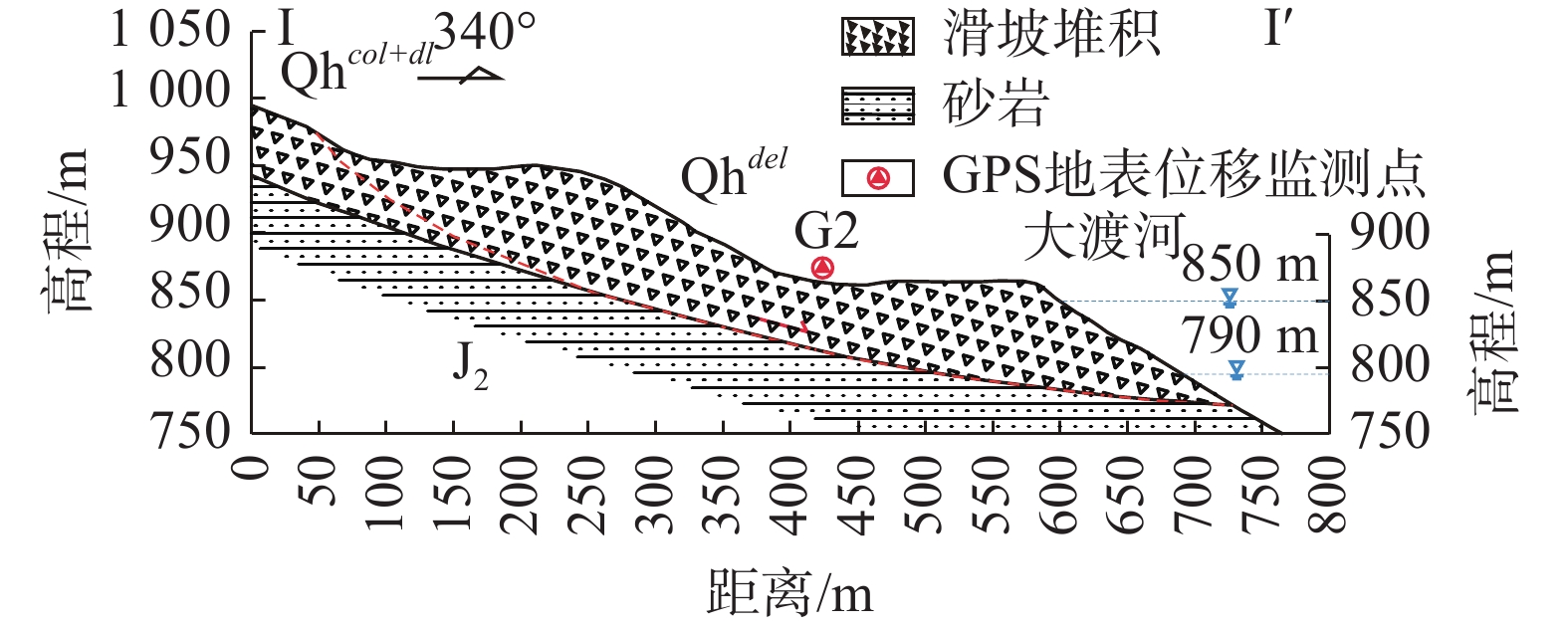
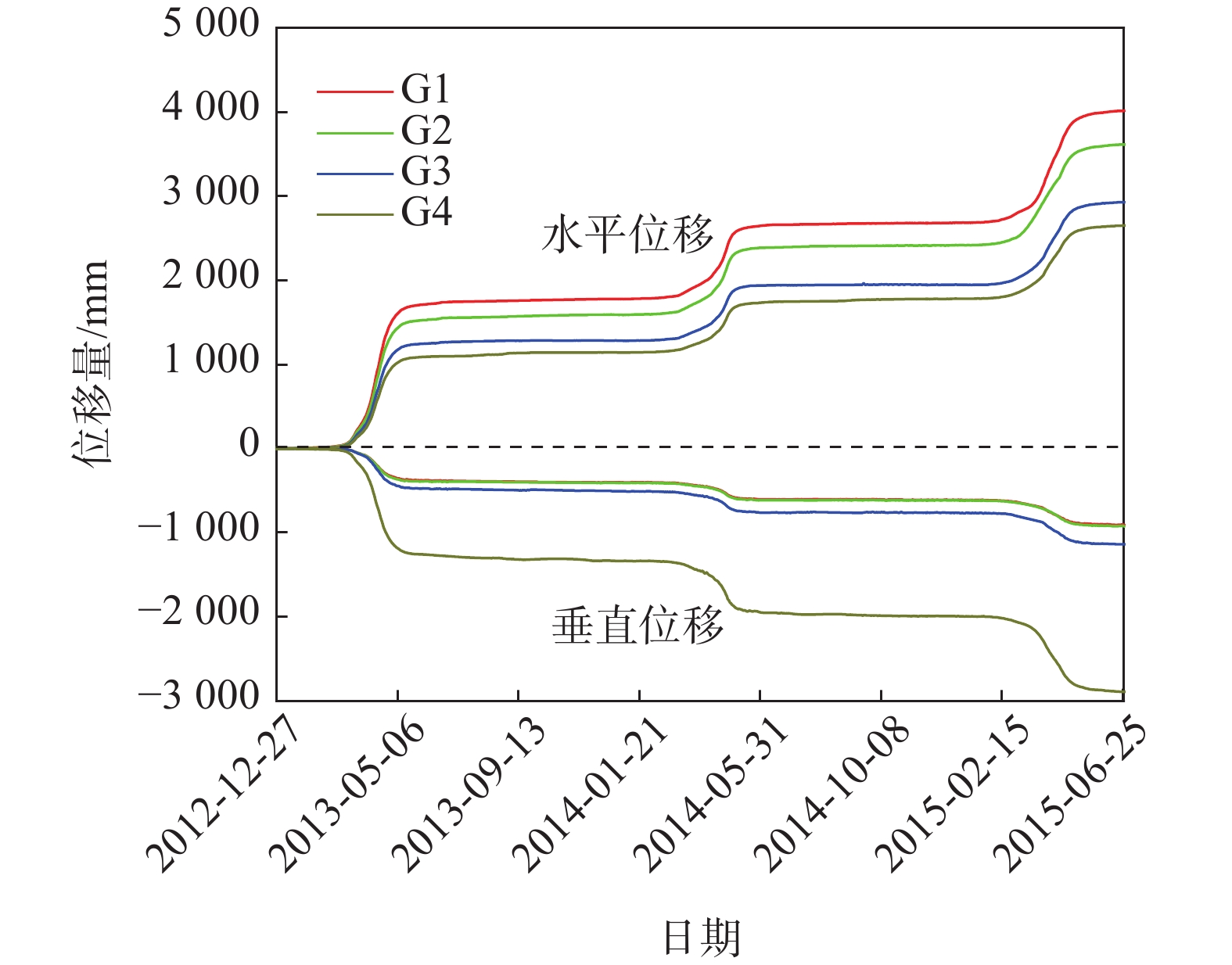
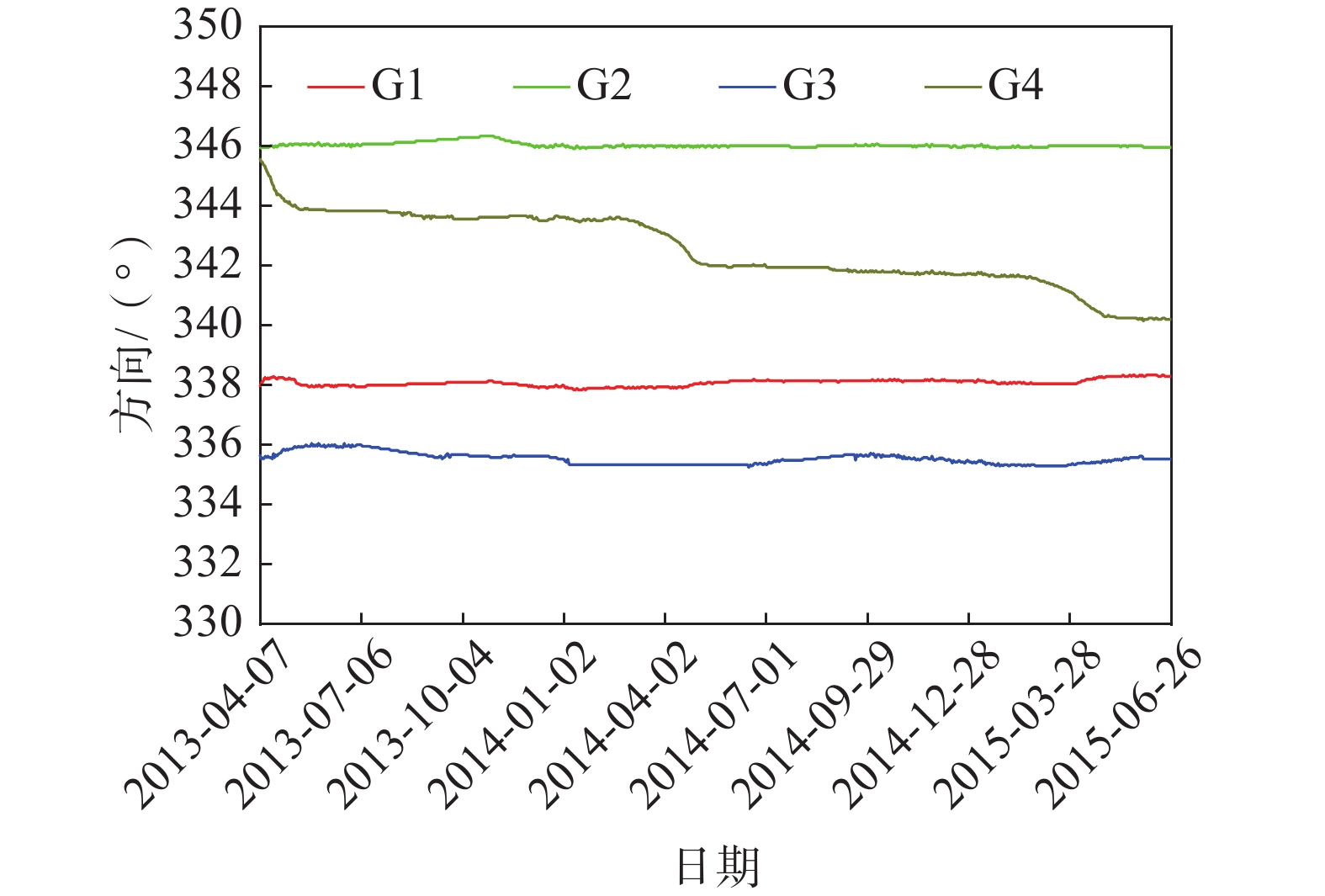
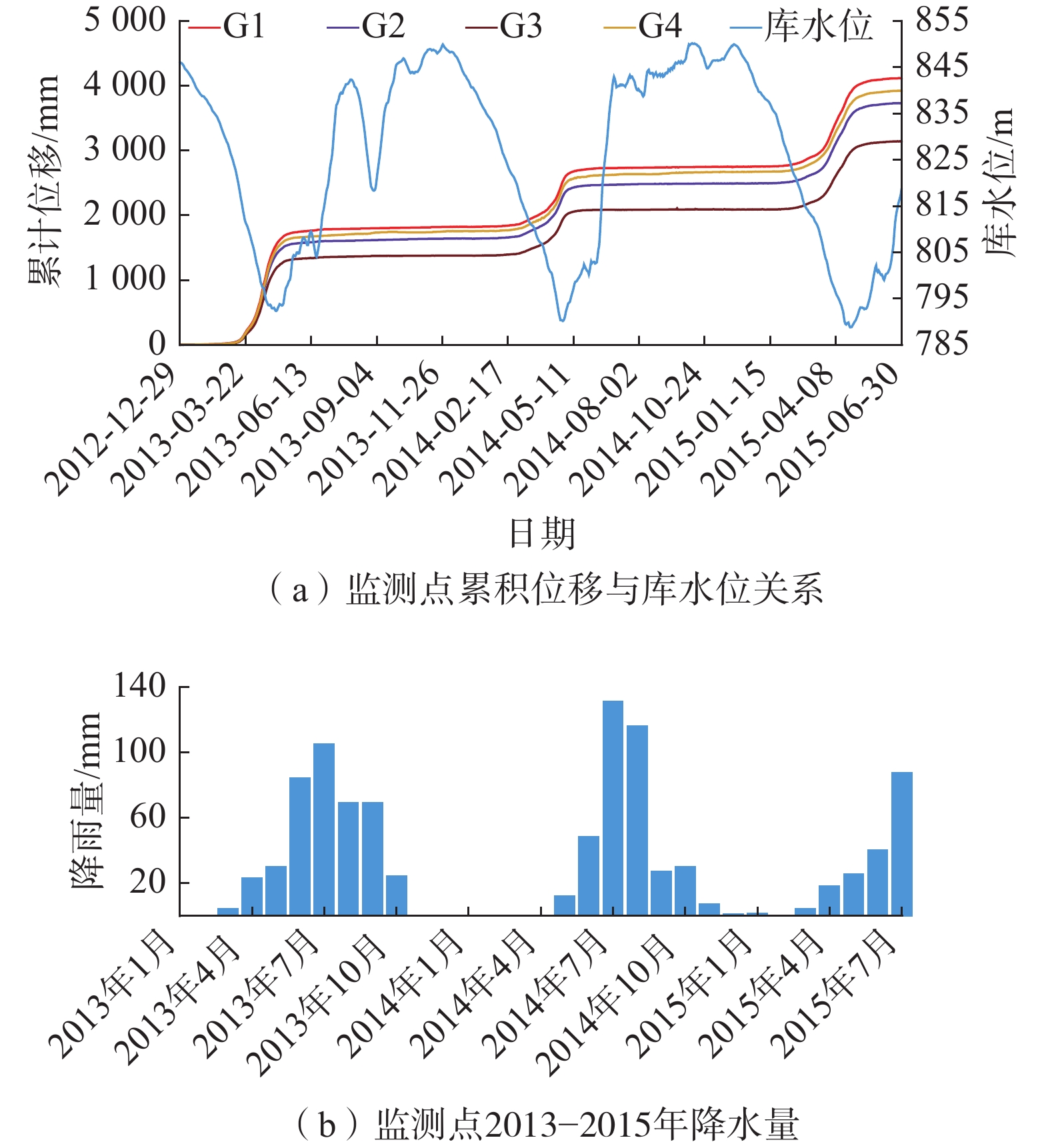

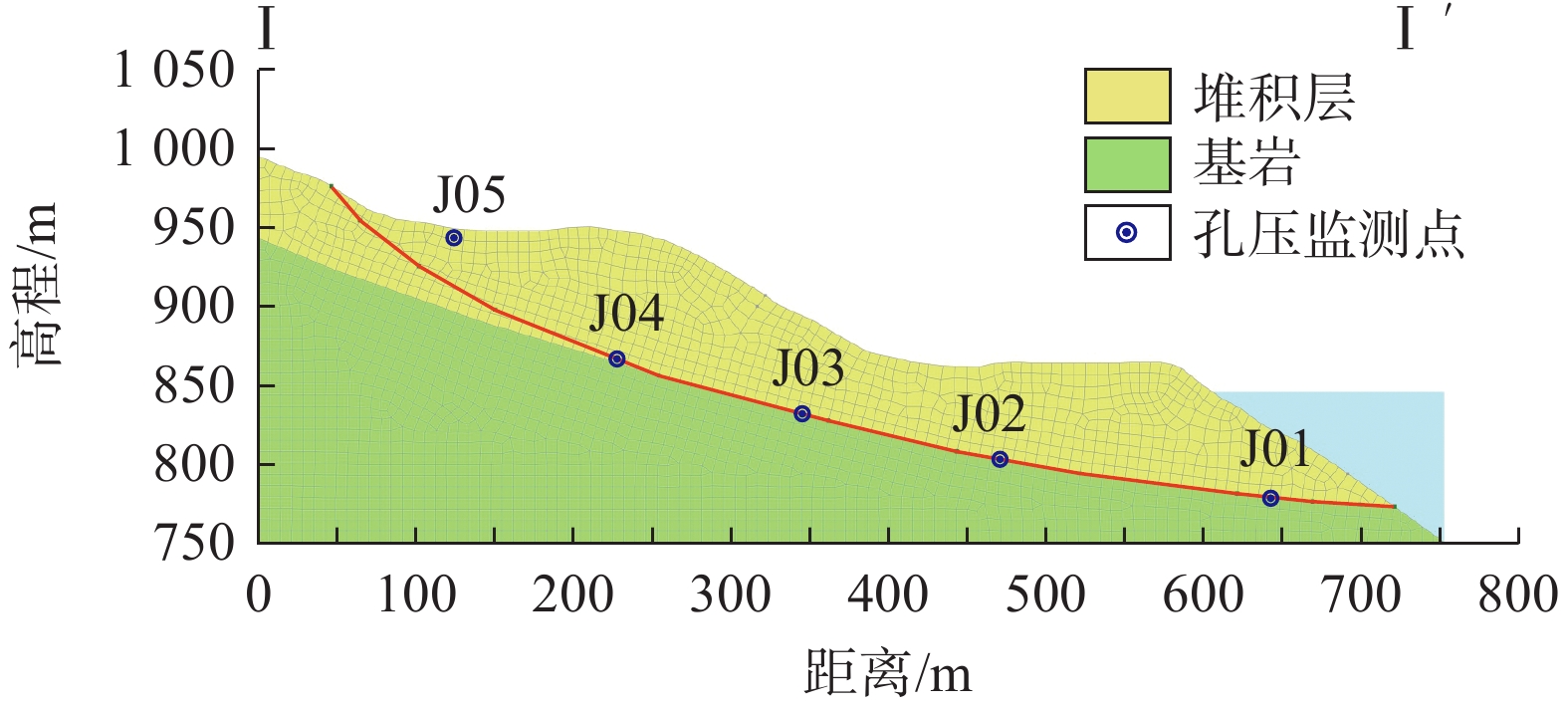
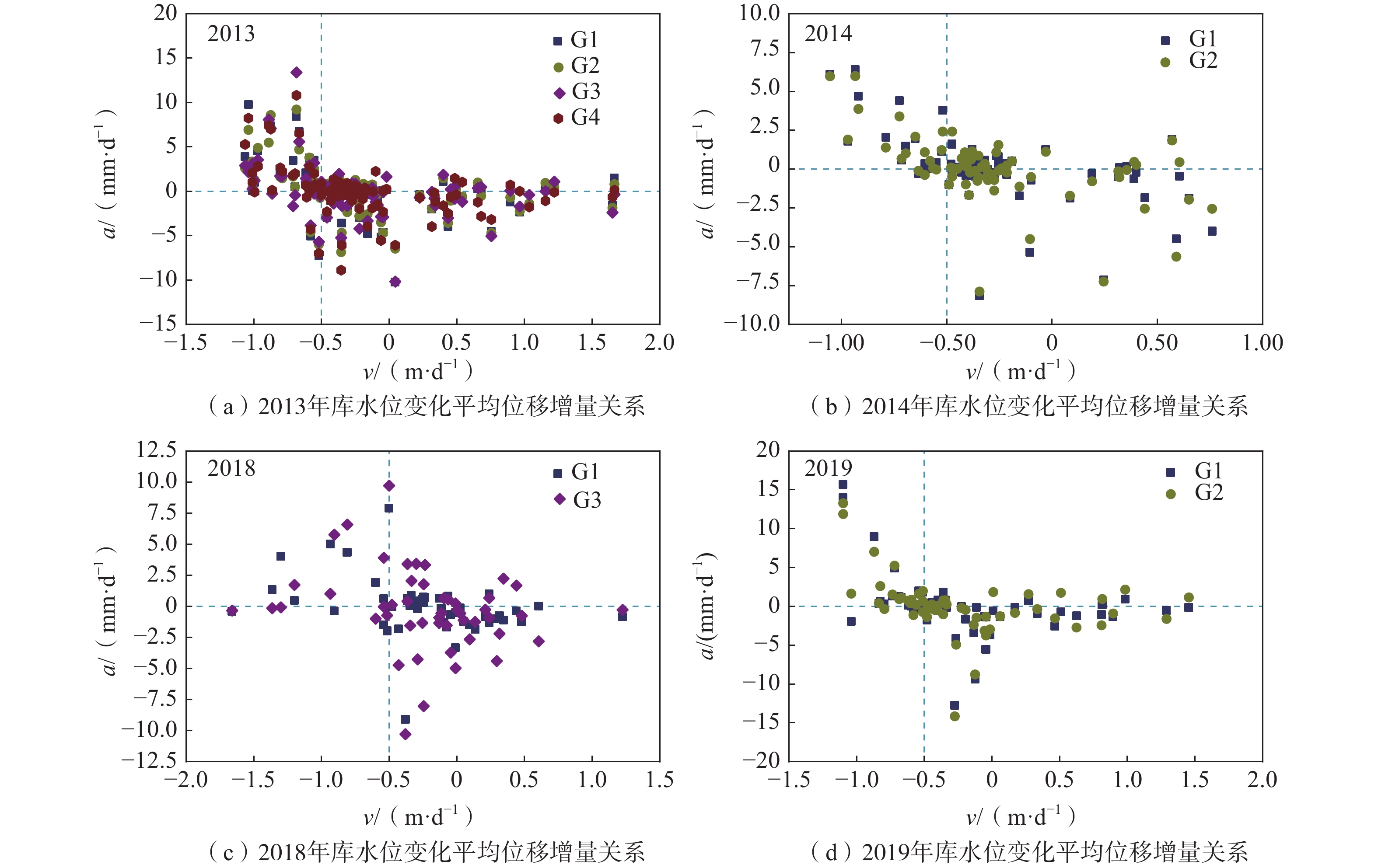
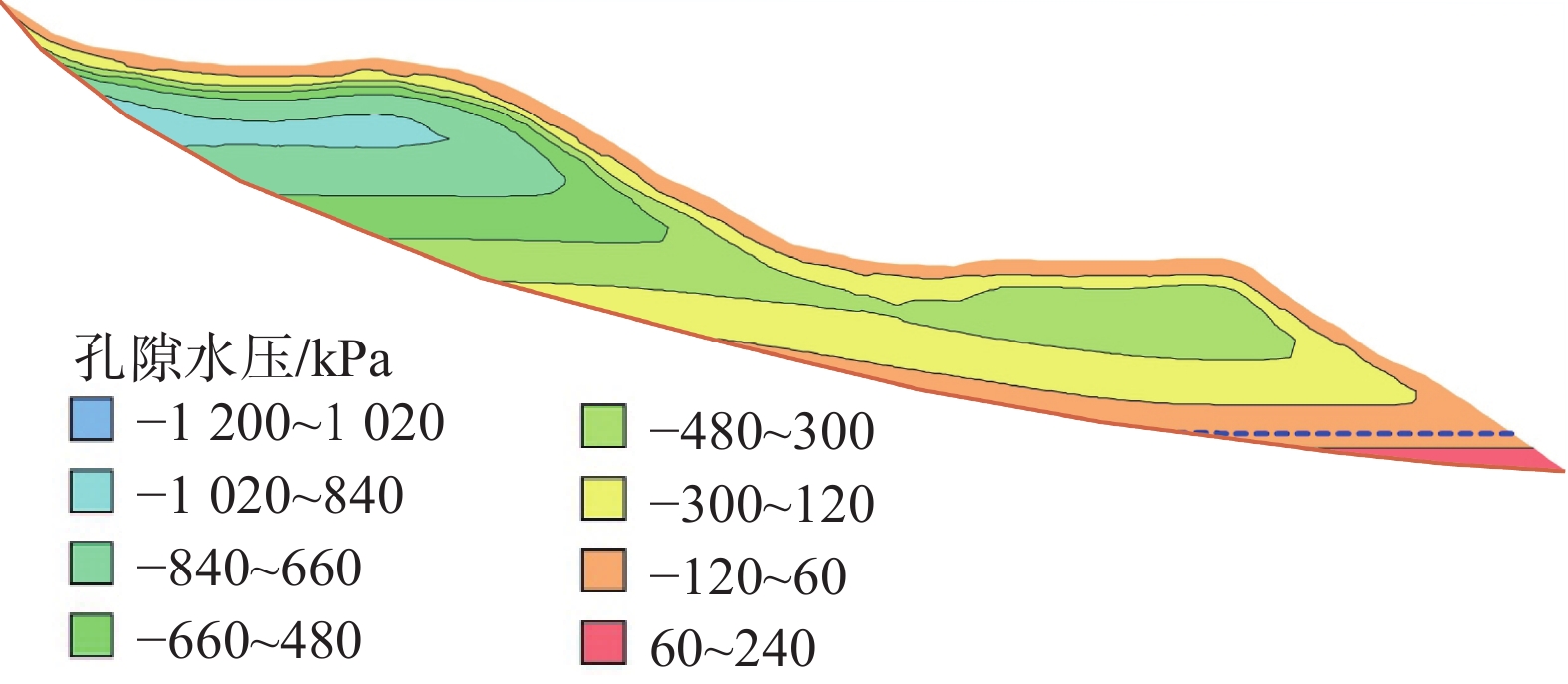
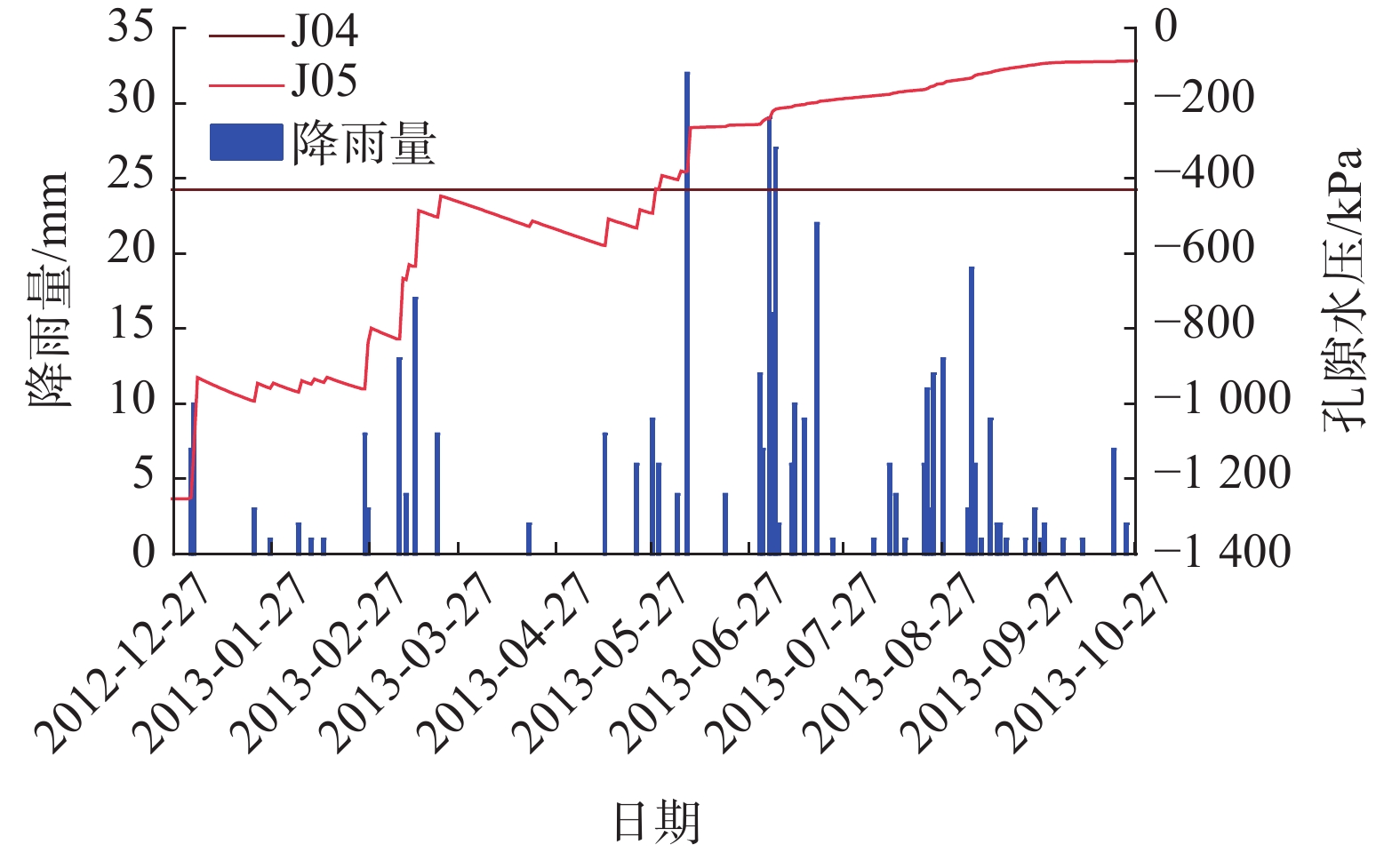
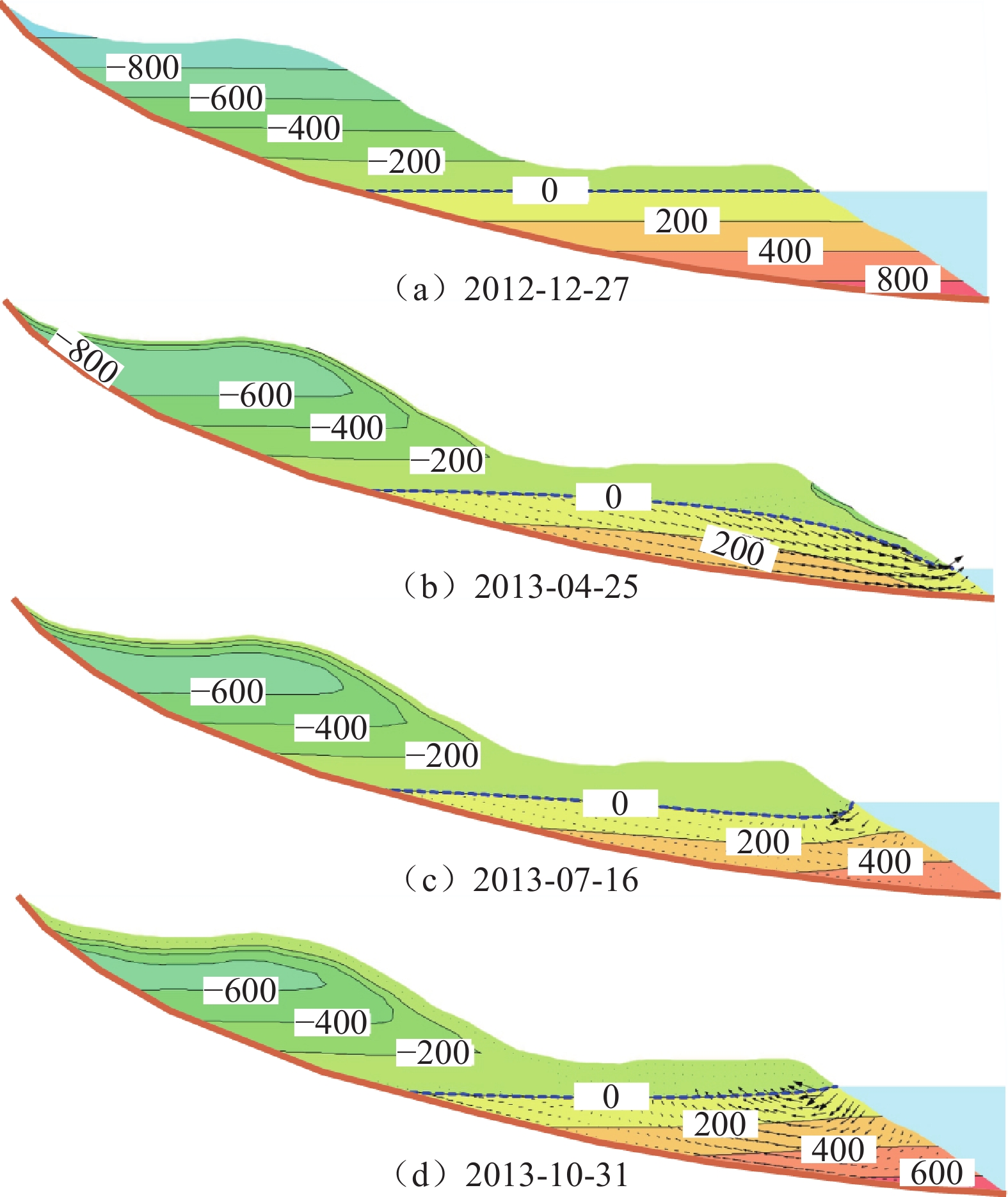
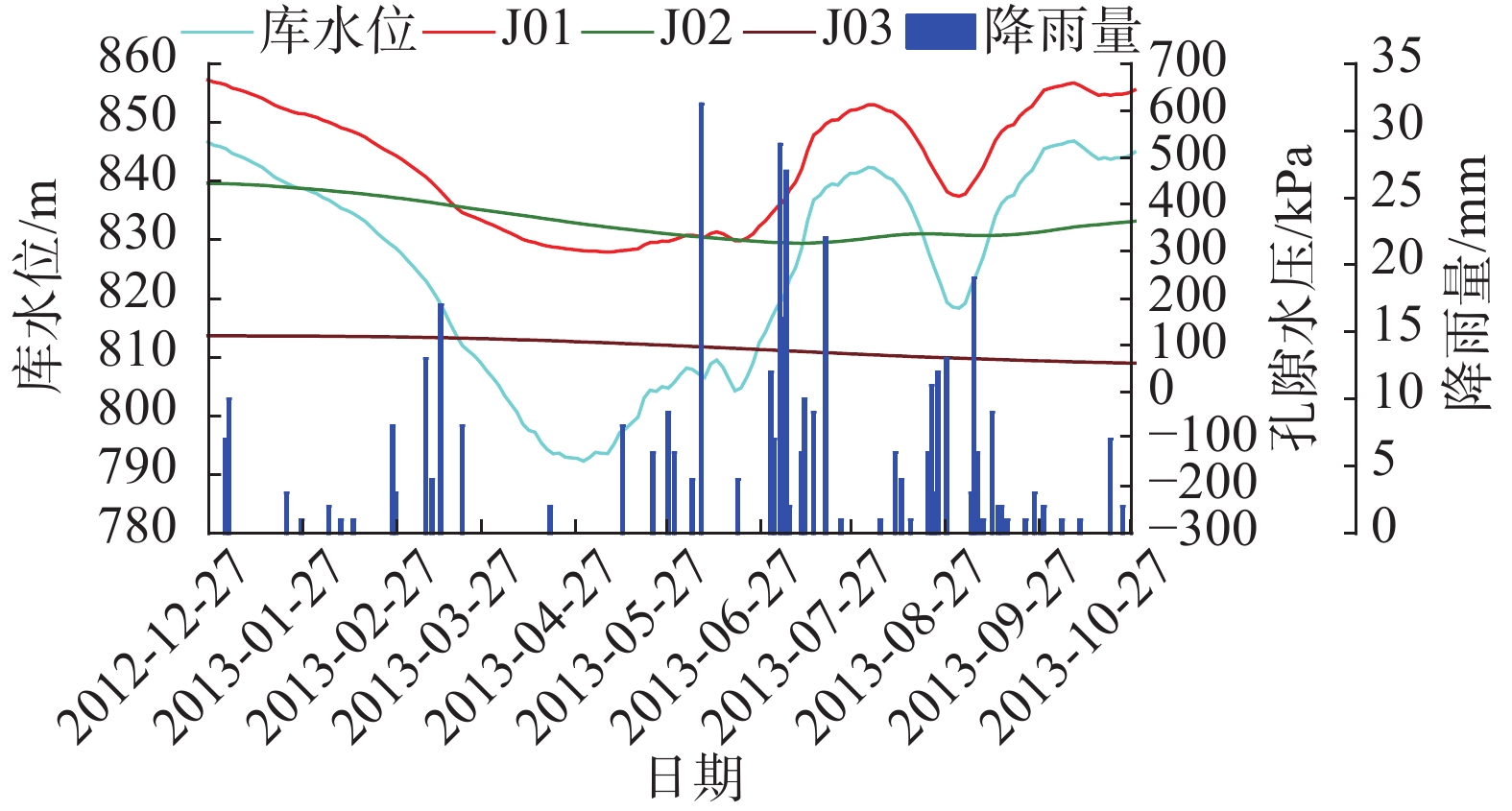
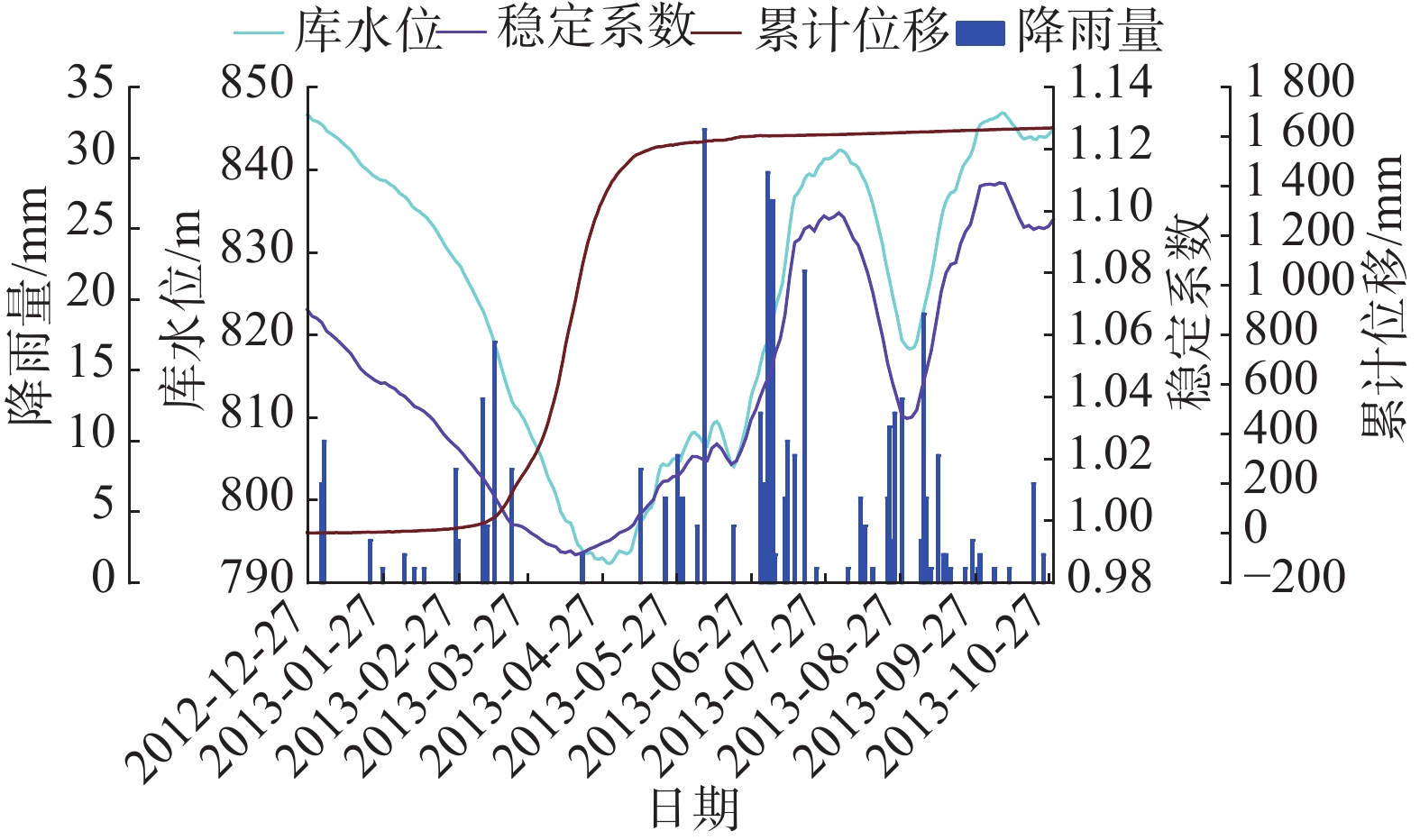
 邮件订阅
邮件订阅 RSS
RSS